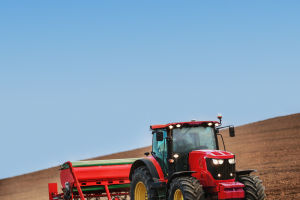Throughout the history of human society, there have been many attempts to replace human and animal power with mechanical power for agricultural farming.
But it was not until the 19th century, when Europe entered the age of steam engines, that the birth of powered agricultural machinery became possible.
In tractor 1830s, there have been people began to study the use of steam vehicles to pull agricultural equipment for fieldwork.
But the steam engine traction vehicle that could be built at that time was like a small locomotive, which would have compacted the soil even if it did not get stuck in the field, making it impossible to plough.
In 1851, Farrarth and Smith in England achieved the first mechanical farming with a steam engine. Some people see this as the beginning of agricultural mechanization, but at that time their approach was to place the steam engine at the head of the field and pull the plowshare that was tilling the field with a wire rope from a distance.
Later, with the progress of steam engine manufacturing technology, the emergence of the miniaturized steam engine, mounted on the chassis of the vehicle to drive the wheels, so that it can be driven from the ground into the field to directly pull the farm equipment, which gave birth to the tractor.
The tractor at that time was very similar to the early steam engine car, but with more horsepower and slower driving speed.
In 1889, the United States Chicago's Chada Engine Company manufactured the world's first agricultural tractor using a gasoline internal combustion engine - the "Baga" tractor.
At the beginning of the 20th century, Sweden, Germany, Hungary, and the United Kingdom, and other countries almost simultaneously manufactured diesel-powered tractors.
1910-1920 years, the steam engine and the internal combustion engine as the power of the tractor between the fierce competition, the latter showed greater superiority, and gradually eliminated the former. Today's tractors all use diesel internal combustion engines.
By the end of the 1940s, tractors had replaced livestock as a more efficient source of power on farms in North America, Western Europe, and Australia, and have since spread to Eastern Europe, Asia, South America, and Africa.
Now, the tractor is the most important power machinery in agricultural production.
Tractor and work equipment linked to form a mobile work unit can complete the ploughing, land preparation, sowing, ploughing, harvesting, agricultural transport, and other farm operations can also drive threshing machines, water pumps, and other agricultural equipment, forming a fixed work unit, fixed operations.
Special tractors can also be used for fertilization, spreading, and harvesting operations, greatly facilitating agricultural production.


